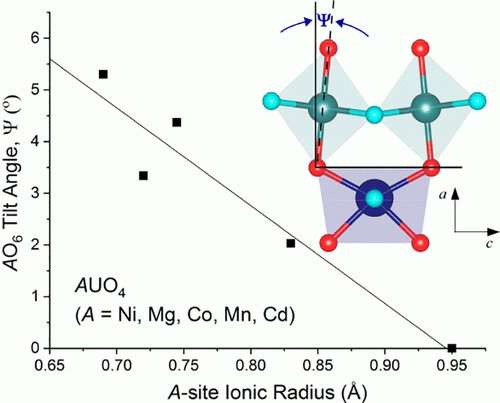Building knowledge of changes in uranium chemistry

"There are still a great many questions to be answered in uranium chemistry, particularly in the context of the nuclear fuel cycle; but when researchers combine their skills and expertise, pioneering and significant solutions can be found," said Dr. Zhaoming Zhang, Principal Research Scientist, Nuclear Fuel Cycle, ANSTO.
ANSTO's considerable expertise in characterizing uranium-containing compounds has contributed to a new systematic investigation of the origins of atomic structural distortions in a family of actinide compounds.
These compounds are known as rutile-related mixed metal ternary (three-part) uranium oxides. Rutile refers to mineral compounds composed primarily of titanium dioxide.
In research published in Inorganic Chemistry, a large team of researchers used both neutron and synchrotron radiation and theoretical calculations to establish systematically precise and accurate crystal structures and uranium oxidation states in the rutile-related mixed metal ternary uranium oxide systems.
"These compounds are relevant to spent nuclear fuel, but the research is also important for uranium mineral science, since some of the ternary uranium oxides have been found in nature," said Zhang, the lead ANSTO author.
Uranium and mixed metal uranium compounds have a unique and complex chemistry, as well as radioactivity, which requires special handling.
It is important to understand the variation in atomic behavior and crystal structure as these are intimately related to material properties, particularly those relevant to spent nuclear fuel.
"Based on previous studies, the crystal structure of all mixed metal ternary uranium oxides, AUO4, is predominantly dictated by the relative size of the A and U ions. However, there is some contention in the correct space group, which describes the symmetry in the crystal structure, to a particular rutile-related mixed metal ternary uranium oxide (β-CdUO4), which initially motivated us to start the current investigation," explained Dr. Zhang.
And although investigations of some of these materials date back to the Manhattan Project, modern advancement in characterizing techniques has allowed us to address gaps in the knowledge of their complex chemical behavior.
This investigation was initiated during the Ph.D. work of the first author, Dr. Gabriel Murphy, now at the Institute of Nuclear Waste Management and Reactor Safety, Forschungszentrum Jülich, Germany, who was supervised by Zhang at ANSTO and Prof Brendan Kennedy at The University of Sydney.
Murphy's Ph.D. thesis explored and elucidated the condensed matter chemistry of uranium in some mixed metal ternary uranium oxides and unraveled some remarkable properties, e.g., identifying the reversible oxygen defect ordering and symmetry lowering transformation with heating in α-SrUO4-x.
The investigators of the current study used a combination of high-resolution X-ray and neutron diffraction, X-ray absorption near edge structure (XANES) spectroscopy, and theoretical calculations to understand the structural distortions occurring in the rutile-related mixed metal ternary uranium oxides, AUO4.
It was discovered that the distortions manifest in the tilting of the AO6 polyhedral units in the structure, as a result of the size mismatch between the A and U cations. The evolution of the tilt angle can also be used to predict phase transformations between different space groups.
"Although the polyhedral tilting has previously been reported in other mixed metal oxides, it is the first application of the phenomenon to mixed metal uranium oxides," said Zhang.
The investigators also importantly highlighted challenges and limitations associated with the application of standard uranium computational codes to mixed metal uranium oxides. Such codes are crucial for instance in the prediction of structure-property relationships in nuclear fuel or fuel-cladding mixed metal uranium oxide products, where these are often too difficult to study using experimental methods.
The investigators consequently provide a corrective approach for this and to help guide future studies of mixed metal uranium oxide materials.
This work was the result of long-term collaboration between Australian and German scientists, which included Drs Max Avdeev, Eugenia Kuo and Daniel Gregg from ANSTO.
The authors thanked Dr. Chris Griffith of ANSTO's Minerals business unit for his support with radioactive materials handling further enabling this work.
"There are still a great many questions to be answered in uranium chemistry particularly in the context of the nuclear fuel cycle, but when researchers combine their skills and expertise, pioneering and significant solutions can be found," said Zhang.
More information: Gabriel L. Murphy et al. Tilting and Distortion in Rutile-Related Mixed Metal Ternary Uranium Oxides: A Structural, Spectroscopic, and Theoretical Investigation, Inorganic Chemistry (2021). DOI: 10.1021/acs.inorgchem.0c03077
Journal information: Inorganic Chemistry




















